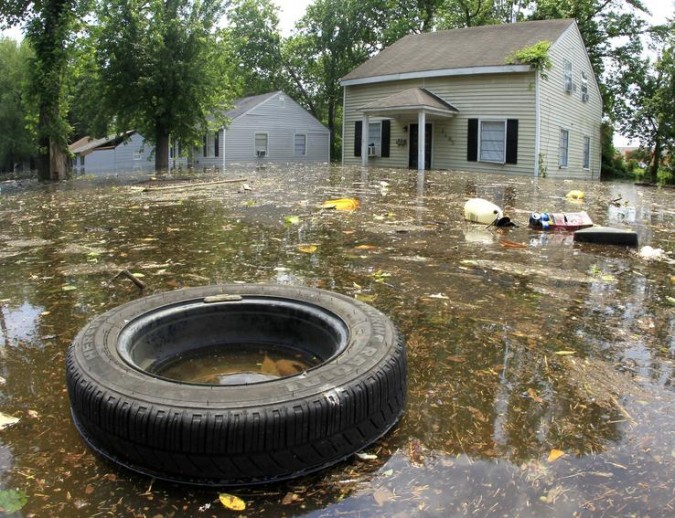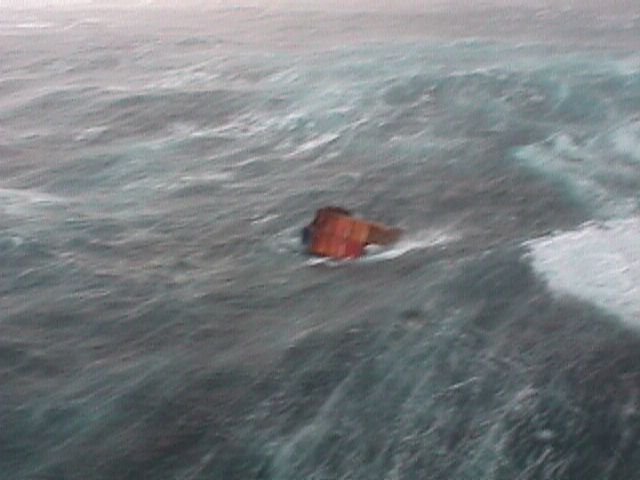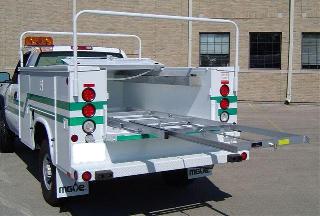Archive for the ‘shipping container homes’ tag
I’m attending Ramp It Up, a fundraiser by SFMade.org
I’m considering manufacturing self contained green homes in San Francisco, California. I don’t know much about the manufacturing business, and I have few contacts in the industry. To help fix that, I’m going to the first SFMade annual fund raiser tonight.
SFMade is a new trade organization that formed to promote the interests of companies that manufacture physical goods in San Francisco.
I first wrote about SFMade on Feburary 28, 2011.
Here’s the link to the event page for this SFMade event, titled Ramp It Up.
The ticket price is USD $45.00, of which USD $25.00 is tax deductible under US tax laws.
Flood resistant homes built from ocean shipping containers
The more I dream about becoming a builder of green homes, the more ideas I come up with.
Today’s crazy idea was inspired by the dramatic 2011 Mississippi River floods now happening.
As I’ve disclosed here before, I want to base my green homes, at least to start, on recycled ocean shipping containers. These containers are strong, waterproof and standardized across the planet. Many companies and private individuals already make homes from shipping containers. I have many spins on the concepts that I think make my plans stand out from other plans I’ve seen.
Unaltered containers are pretty water tight. They are so water tight that when they fall off a container ship during a storm, they float for a while — even months is possible. They are a major hazard for other boats and ships, because they are very hard to spot, as they float so that most of the container is submerged, with only about a foot sticking up out of the water. If a boat hits a floating container, that boat can sink from the damage caused by the impact.
My uncle Gerald Warnock is an avid fisherman. On our most recent fishing expedition, last month, I was telling him about my green housing ideas, and he said floating containers are such a marine hazard that there are plans being discussed to install a ‘fuse’ in the side of containers that will disintegrate when immersed in water. Thus, an overboard container will flood and sink once the fuse disintegrates. This will send the cargo to the bottom, but make water travel safer.
I think it would be better to put a satellite beacon in every container, and have the beacon activate when the container is imersed in water. Then the container location could be broadcast on the Internet, and treasure seekers could go pick up the container. Perhaps there could be a bounty sharing treaty set up so the entity salvaging the container would get to keep half of the value and the original owner would get the other half.
People on land spend hours with metal detectors looking for valuables on beaches and elsewhere. I bet that overnight a mini industry would spring up if there were an electronic map overlay website with dots where floating lost shipping containers potentially filled with valuable new products could be found. In fact, I predict that salvagers would compete and the team with the fastest ship would prevail. I don’t know how ships get public data at sea, but there must be a way to publish container location GPS coordinates via a low cost system that can be accessed while at sea. Since the containers are on the move, one would need up to the minute satellite beacon information to justify spending fuel money to travel to a location where a container is supposed to be. I advocate publishing the contents and declared value of the container’s contents along with the coordinates, so salvagers will be able to gauge whether it’s worth it to make the trip. Environmental groups should like my plan, as sunken containers probably aren’t a good thing.
That’s not my idea I intended to write up in this post… it’s just another one of my ideas I’ve wanted to write up for a while now.
My idea I intended to write in this post is to use the shipping container door as the home door, leaving the weather stripping intact. Yes, I would dress up the door and insulate it, to increase its asthetic appeal. But if I leave the original door, then the home can stay watertight if I make the other openings similarly watertight.
Thus, the windows would have to have shutters that could be closed, and the shutters would need to be water tight like the door. The roof hatch also would need to be water tight, and any openings for plumbing lines, electrical lines and the like also would need to be watertight.
Such watertight products already exist for the maritime industry. The roof hatch on a sailboat is reasonably watertight, and while these cost more than a house skylight, they’re not that much more costly. I doubt a sailboat hatch could withstand water pressure if the container were many feet underwater. So, to combat that threat, I could use a submarine hatch! That should handle whatever pressure develops… Seriously though, I doubt flooded areas encounter flood depths such that marine grade trap doors and hatches would not keep most or all of the water out.
The resident of a green home built as I describe here could weather a flood by just closing the door, the windows and the roof hatch. Even if the home were entirely underwater, it would remain dry inside. I wouldn’t recommend trying to live inside, as the air would run out in short order, of course. But when news of an impending flood is received, it would take just minutes to close up the house and depart for higher ground.
There will be tremendous societal benefit to avoiding the billions of dollars in flood damage that results from our current non-waterproof housing.
Shipping container homes without waterproof doors, windows and roof hatches are already very resistant to earthquakes and tornados. Adding waterproofing is not really much extra work, and I would consider making it standard for all homes in flood prone areas, and an available option for all homes, since flooding is likely to get worse over the next few centuries, and I predict any green homes I make from shipping containers will endure for at least a century. These would not be throwaway mobile homes with a cheap feel from day one. These would be rock solid, nearly indestructible homes to pass down from generation to generation.
When I was touring NIMBY a while back to look for space to build a container home, I saw shipping containers from decades ago, from before their design was standardized by the ISO. These things don’t fall apart. I think a properly designed container home clad in suitable exterior siding like brick or granite could last indefinitely — certainly as long as the centuries old housing one sees in parts of Amsterdam and Paris.
Slide out solar panels for my bus conversion
For a while now I’ve been thinking about putting solar hot water and solar photovoltaic panels on slide out mechanisms on the roof of my RTS bus conversion.
Today I found a supplier that would make this plan easy to implement.
I imagine that when camped I could push a button and solar panels could extend from the street and curb side of the conversion.
There would be the primary panels about a foot over the top of the roof, flush with the top of the roof deck shroud I’m planning. The extra panels would be under the primary set, and these are the panels that would slide out.
At first I thought I would use stainless steel heavy duty drawer slides for this project, but they are very costly and would require that I build a frame to use them with. Then, on YouTube, I found the solution: Glide N Grab
This company makes slide out platforms for pickup trucks, work vehicles and RVs. The platforms are available made from aluminum, which I like for weight savings and corrosion resistance. The aluminum slides are available in capacities up to 1,000 pounds. Photovoltaic panels weigh about 50 pounds, and I probably could fit two at once on one of these slide out platforms. That would leave unused capacity of 900 pounds to battle the forces of the wind, which could be ferocious. The Glide and Grab company even sells a motorized extend and retract option, so I wouldn’t have to build something special.
These slides are quite affordable compared to drawer slides, and I think they’re much more suited to the task. I probably won’t implement this plan for years, as I still have so much work to do, and I’m busy with work and my urban homestead. But I wanted to write about this today as I am really excited about this idea. For bus converters where money is of little object, these slides are cheap, and if you covered the roof of a $2,000,000 Prevost with panels and slide out panels on the street and curb side, that’s probably enough power to run an air conditioner to keep 1/4 or a 1/3rd of the vehicle cool without running a generator. This would be a green selling point, and it would certainly be a conversation starter in the high end resorts where the owners of these vehicles vacation. These 45 foot monsters could be segmented with doors or curtains so the entire vehicle doesn’t need to be cooled at once.
If I build shipping container houses, these slides make sense, since a key goal is to not need grid electricity. For extreme climates, the area on the roof of a container may not be large enough to generate all the energy needed. With these Glide N Grab slides, one can at least triple the solar capture area. I suspect that the slide area does not count as ‘projected roof area’ when building codes are applied, since the panels can be retracted each day when the sun goes down or during severe winds. Using slides on the roof of a shipping container house would also allow more of the roof of the container itself to be used for food production, increasing the potential for self sufficiency.
This idea is certainly less adventuresome than the idea of making entire rooms slide out of an RV or bus conversion, which must have seemed crazy when first proposed. Room slides caught on, and even inexpensive RVs and travel trailers now offer them.
I see no reason why solar hot water heating panels can’t be placed on these Glide N Grab slides, though perhaps the heavier duty steel slides would have to be used, and special water tubing would have to be used that is both flexible and resistant to ultraviolet radiation.
If you implement this sliding solar panel plan before I do, please send me some pictures.
I suspect someone has already thought of this idea and has implemented it. I couldn’t find any references after a brief search online. If you know of a writeup that predates this one, please add a comment to this post. Thank you!





